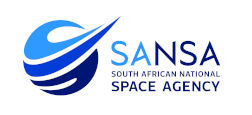[vc_row css_animation=”” row_type=”row” use_row_as_full_screen_section=”no” type=”grid” angled_section=”no” text_align=”left” background_image_as_pattern=”without_pattern” padding_top=”0px” z_index=””][vc_column][vc_column_text css=”.vc_custom_1614945738165{padding-top: 0px !important;}”]
Introduction
New Earth Observation Frontiers (NEOFrontiers) is an innovation funding mechanism, initiated by the Department of Science and Innovation, and established by the South African Space Agency (SANSA) in collaboration with the National Research Foundation (NRF). It seeks to stimulate collaboration, cooperation, and innovation in the South African Earth Observation community, both public and private. The NEOFrontiers funding opportunity is envisaged as a collaborative yet competitive funding mechanism for developing capabilities around new sensors, products and services, and value-added components.
NEOFrontiers seeks to achieve its objectives by publishing a call for proposals related to:
- Support Actions: short term 1-2 year actions that typically seek to either inform further R&D investment through review/desktop study type actions or seek to develop specific short term capabilities that enable transition of research outputs into downstream operational services.
- Domain Development Actions: longer term 2-3 year research and development projects that typically seek to establish new national EO capabilities across the value chain, aiming at long term exploitation and bringing SA closer to the leading edge internationally. Both directed (closely constrained thematically) and Open calls are envisaged.
[/vc_column_text][vc_empty_space][vc_separator type=”normal”][/vc_column][/vc_row][vc_row css_animation=”” row_type=”row” use_row_as_full_screen_section=”no” type=”grid” angled_section=”no” text_align=”left” background_image_as_pattern=”without_pattern” z_index=””][vc_column][vc_empty_space][vc_column_text]
Support Action SA/2020/1: Closing Date- 15 March 2021
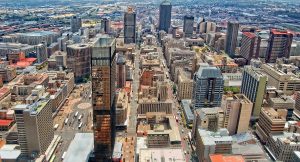 Focus: Innovative Earth Observation Approaches to Sustainable Urban and Rural Development;
Focus: Innovative Earth Observation Approaches to Sustainable Urban and Rural Development;
Addressing: SDG 11 Sustainable Cities and Communities: Make cities and human settlements inclusive, safe, resilient and sustainable.
Primary Activities and Outputs: South Africa is rapidly urbanizing with more than 63% of its population living in urban areas and this number will rise to 70% by 2030. This will put a lot of pressure on the natural environment, services and infrastructure, calling for adequate and effective urban planning. The growth of cities also results in degradation of natural habitats, changes in species composition, cities micro-climate, energy flows and subsequently creating urban heat islands. The realization of the Human Settlements Vision 2030, on the road to 2050 requires effective and sustainable urban planning and development management, supported by adequate and up-to-date geospatial information base.
Earth observation technologies provide opportunity to map, monitor and inform human settlement-related dynamics, providing valuable geo-spatial information on the interaction between human activities, the built environment, natural habitats and climate. Proposals are requested to develop innovative earth observation-based approaches to improve decision-making for sustainable urban and rural development in South Africa. Proposals should seek to maximise the value of available earth observation data through new analytics, data fusion, quantitative knowledge addition or other innovative approaches. Proposals must use a multi-product approach, utilising data from at least two satellite-derived product types. There must be a strong focus on high level metrics or indicators – whilst proposers have significant flexibility in choice of these metrics, there must be strong justification, demonstrated innovation and high potential impact value.[/vc_column_text][vc_separator type=”normal”][vc_column_text]
Domain Development Action DDA/2020/1: Closing Date- 15 March 2021
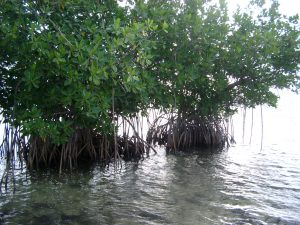 Focus: Development of new High Resolution Water Quality Observation Capabilities for Coastal and Estuarine Systems
Focus: Development of new High Resolution Water Quality Observation Capabilities for Coastal and Estuarine Systems
Primary Activities: Coastal ecosystem services are of national importance as they impact on food security and agriculture, human livelihoods, and trade and industry. Water quality is critical to these coastal ecosystem services, impacting upon the ability to sustainably exploit and conserve ecosystem functionality. Marine biodiversity, fisheries, tourism, infrastructure and the built environment within coastal areas have all been identified as sectors requiring specific interventions to ensure that the oceans and coastal environment continues to deliver goods and services to society. Such services include extractive resource use, abstraction and discharge, fisheries, aquaculture, and tourism. Water quality can be compromised by any combination of anthropogenic activities such as domestic and industrial wastewater, solid waste, contaminated storm water run-off, climate change – and natural phenomena such as harmful algal blooms.
In the last few years, the availability of free data from relatively high-resolution sensors (<1km), such as Sentinel 2 and Sentinel 3, provided the potential to provide high-frequency water quality information on a routine basis at appropriate scales. Whilst this operational potential has been realized to some degree for South African freshwater systems, through programmes such as the Earth Observation for National Eutrophication Monitoring (EONEMP), there is currently no routine high-resolution capability for South African coastal and estuarine waters. Proposals are requested to further develop such a coastal water quality capability, as an integrated component of the Oceans and Coastal Information Management (OCIMS) project.
Proposals are requested to undertake the development of new high resolution (<1km) near coastal and estuarine/embayment water quality products, based primarily on the Sentinel 2 and Sentinel 3 Full Resolution (FR) sensors. These products are expected to be integrated into the existing Oceans and Coastal Information Management System (OCIMS) Water Quality Decision Support Tool, with appropriate development of the relevant OCIMS front end. Proposals should also recognize analogue systems under development for inland water quality monitoring and seek to establish some first order synergy between the initiatives for estuarine applications.[/vc_column_text][vc_separator type=”normal”][vc_empty_space][/vc_column][/vc_row][vc_row css_animation=”” row_type=”row” use_row_as_full_screen_section=”no” type=”grid” angled_section=”no” text_align=”left” background_image_as_pattern=”without_pattern” z_index=””][vc_column][vc_column_text]
Support Action SA/2021/1: Closing date- 15 May 2021
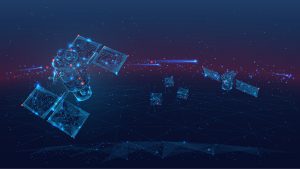 Focus: Artificial Intelligence and Earth Observation: Roadmap to Establish Cross-Sector Value and Approaches;
Focus: Artificial Intelligence and Earth Observation: Roadmap to Establish Cross-Sector Value and Approaches;
Primary Activities and Outputs: Artificial intelligence (AI) offers significant potential to increase the value of Earth observation, in particular the ability to more fully exploit large amounts of data from new generations of satellites. These include new means of calculating geophysical parameters from satellites, and new means of handling data diversity, volume and complexity. This action will focus on fostering the relevant AI skills, knowledge and resources, enabling the South African and regional communities to more effectively use AI across the research, public and private sectors. The action should be followed by further calls in coming years to build upon the roadmap developed here. This call should enable the building of a community to allow a greatly improved capability to exploit AI, through various roadmap activities.[/vc_column_text][vc_empty_space][vc_separator type=”normal”][/vc_column][/vc_row][vc_row css_animation=”” row_type=”row” use_row_as_full_screen_section=”no” type=”grid” angled_section=”no” text_align=”left” background_image_as_pattern=”without_pattern” z_index=””][vc_column][vc_column_text]
Support Action SA/2021/2: Closing date- 15 May 2021
Focus: Earth Observation and Disruptive Economics: Developing Smart Tools for Value Enhancement for Small Scale Food Production
Primary Activities and Outputs : Monitoring agricultural activity relies on the availability of accurate and consistent information from diverse sources including EO services. The EO products enable early detection of risks and frequent and consistent monitoring of the condition and health of agricultural production systems, such as field crops and other vegetation resources (e.g. grazing and browse material for livestock production). Providing small-scale farmers with mobile smart solutions through EO derived predictive information, presented in appropriate forms, would result in enhanced and more consistent production, reduced exposure to risk, and an enhanced ability to enter larger-scale supply chains and exploit financial support.
The call focuses on eliciting, collection, optimisation and evaluation of the user requirements for the development of an EO-based mobile application. These user requirements should be quantitatively synthesised using the Reference Model for Open Distributed Processing (RM-ODP) or a similar justified analogue model. This call will focus only on the user interaction layer i.e. the enterprise (What for? Why? Who? When?) and the information (What is it about? How is it interpreted?) viewpoints. These requirements should include user archetypes, typical functional requirements, typical interfaces and other relevant information. These requirements should therefore address both content (what) and presentation (how) and include case study narratives around a variety of decision-making scenarios. These requirements will then be used in a further call for app development.
[/vc_column_text][vc_empty_space][vc_separator type=”normal”][/vc_column][/vc_row][vc_row css_animation=”” row_type=”row” use_row_as_full_screen_section=”no” type=”grid” angled_section=”no” text_align=”left” background_image_as_pattern=”without_pattern” z_index=””][vc_column][vc_column_text]
Domain Development Action DDA/2021/1: Closing date- 15 May 2021
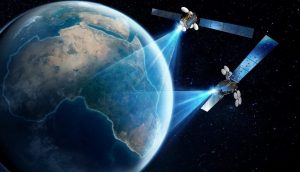 Focus: Development of New Hyperspectral Capabilities across Terrestrial, Aquatic and Atmospheric Domains
Focus: Development of New Hyperspectral Capabilities across Terrestrial, Aquatic and Atmospheric Domains
Primary Activities: SANSA seeks to establish improved national capabilities to exploit future space-based hyperspectral sensors and missions. The initial focus will be on terrestrial vegetation (including agriculture), coastal and inland water quality, and atmospheric applications, with a strong emphasis on optical and radiative transfer modelling. There is potential for collaboration with the NASA Surface Biology and Geology and NASA Bioscape projects, including participation in 2022 NASA multi-sensor overflights in South Africa. Proposals should seek to broadly address the following: better quantitative understanding of hyperspectral signal variability; comparative analyses of hyper- over multi-spectral in extracting value; assessing optimal hyperspectral sensor configurations; addressing critical challenges in atmospheric correction and inversion; developing technology demonstrators for enhancing the scientific readiness levels (SRL) of future hyperspectral missions.[/vc_column_text][vc_empty_space][vc_separator type=”normal”][vc_column_text]
Call for proposals
Proposals to be submitted by researchers and experts based and or affiliated with public research institutions that are registered in the NRF grant recipient database. All proposals are expected to include, as consortia members, some combination of at least three of the following: government departments (non-funded), Tertiary Education Institutions, Science Councils, and Private Sector companies and SMMEs or Non-profit Organisations working in the relevant domains. Proposals that include representation from the private sector will be viewed advantageously.
All application materials must be submitted electronically via the NRF Online Submission System at: https://nrfsubmission.nrf.ac.za
All applications must be endorsed by the research office/designated authority of the applicant’s institution before submission to the NRF. It is the responsibility of each applicant to familiarise him/herself with the internal closing dates, set by his/her institution in order to meet the NRF closing date included in the “General Application Guide 2022”.
For more information on the call, read the framework document or contact sbernard@sansa.org.za / isaloojee@sansa.org.za[/vc_column_text][vc_empty_space][vc_separator type=”normal”][/vc_column][/vc_row][vc_row css_animation=”” row_type=”row” use_row_as_full_screen_section=”no” type=”grid” angled_section=”no” text_align=”left” background_image_as_pattern=”without_pattern” z_index=””][vc_column width=”1/3″][vc_single_image image=”8781″ img_size=”full” onclick=”custom_link” img_link_target=”_blank” qode_css_animation=”” link=”https://www.dst.gov.za/”][/vc_column][vc_column width=”1/3″][vc_single_image image=”8782″ img_size=”full” onclick=”custom_link” img_link_target=”_blank” qode_css_animation=”” link=”https://www.sansa.org.za”][/vc_column][vc_column width=”1/3″][vc_single_image image=”8783″ img_size=”full” onclick=”custom_link” img_link_target=”_blank” qode_css_animation=”” link=”https://www.nrf.ac.za/”][/vc_column][/vc_row]


